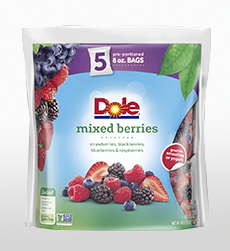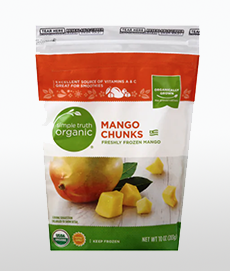The Best Foods To Buy Frozen: It’s National Frozen Food Month
|
|
March is National Frozen Food Month (National Frozen Food Day is March 6th). Our working mom loved the convenience and cost savings of frozen vegetables. We had a huge freezer, and we kids enjoyed our nightly choice of picking the two boxes of frozen veggies we wanted for dinner. Decades later, frozen foods still mean convenience and savings. Frozen food companies know to pick and freeze fruits and vegetables when they are just right to eat. Specialists in frozen fish and meat know just how to deliver the proteins at their tastiest. Mom used to steam our frozen veggies, but according to Buffalo Market: “Sauteing frozen vegetables on the stovetop guarantees the best texture and flavor. As a secondary option, you could roast them in the oven or even cook them on the grill. All three of these options are going to result in better-tasting veggies than if you boil, steam or microwave them.” Oops. And don’t defrost frozen vegetables first, because they can lose their crunchy texture. (As always, read package directions before cooking anything.) > Here are more Buffalo Market tips. In our own kitchen, we toss berries, corn, edamame, and green peas directly from the freezer into batter/dough, omelets, salads, and soups. According to Eating Well: “The average American throws away around $1,300 per year from wasted food. That’s more than Americans’ average annual spending on vehicle gasoline, apparel, household heating, or property taxes.” > The history of frozen food. Berries. Berries in season have a short shelf life. If you don’t eat them in a couple of days, they can dry up and develop mold. Berries out of season aren’t as sweet and are pricier. They’ve traveled overseas to get to your grocer’s (more food miles†). Chopped Beef. Save money on burgers, meatloaf, pasta sauces, shepherd’s pie, and other dishes by buying frozen chopped beef. If you eat burgers regularly, you can cook them frozen; and you can also thaw them and use the chopped meat in other recipes. Corn, Green Peas & Edamame. Our three personal favorites in the veggie department. We like them in casseroles, omelets or scrambled eggs, pasta, salads, stews, and soups. Fish. Frozen fish fillets* or steaks thaw overnight in the fridge or in 10 minutes by using the hot water technique. Mango. We got tired of trying to peel a mango in a way that looked presentable. Plus, we often misjudged its ideal ripeness: Peel it too soon and it’s hard and fibrous, too late and it’s mushy. But frozen mango chunks seem to be just right. Rice. Microwaved individual packets of brown rice (and other grains) are on the table in 3 minutes, fluffy and delicious. We learned to buy frozen rice from a nutritionist who wanted us to eat more whole grains. Spinach. Frozen spinach was perhaps the first frozen food we ever bought. It was specified for a spinach-artichoke dip we made for a party—and it remains the best form of spinach for dips and spreads. We also use it in casseroles and stratas, manicotti and stuffed shells (mixed with ricotta), omelets and quiches, pizzas, smoothies, and more. Just let it thaw and squeeze out all the water. Other Vegetables. In addition to the veggies we’ve already mentioned, we happened across Southern Living’s favorite vegetables to buy frozen include broccoli, butternut squash, carrots, cauliflower, lima beans, okra, and peas. |
|
|
Are you ready to add some frozen food to your arsenal? Pick out at least one to celebrate National Frozen Food Month. We bet you’ll be adding more frozen options as the months go by. ________________ A note about frozen fish: Some imported frozen fish are not farmed sustainably. For example, Seafood Watch advises to avoid sutchi catfish (a.k.a., pangasius) that is farmed in Vietnam. “The hyper-intensive production that occurs in Vietnam generates large volumes of effluent, and many farms are reportedly engaging in illegal dumping. Data on chemical use is not available, but there’s evidence that it’s very high and includes the use of antibiotics that are critically important to human health.” However, there is some good news: “Farm-level eco-certification is increasing in Vietnam. Look for pangasius that’s been certified by Aquaculture Stewardship Council (‘ASC’), Best Aquaculture Practices (‘BAP’), or Naturland.” CHECK OUT WHAT’S HAPPENING ON OUR HOME PAGE, THENIBBLE.COM. |
||






